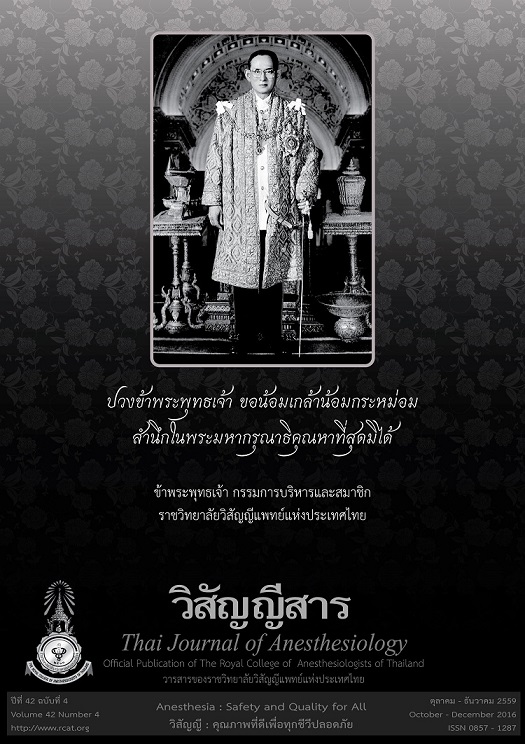A randomized controlled trial comparing of volume controlled and pressure-regulated volume controlled ventilation in patients undergoing laparoscopic gynecological surgery under general anesthesia
Main Article Content
Abstract
Background: Adjustment of ventilatory settings and ventilatory mode in laparoscopic gynecologic surgery for improved mechanical ventilation performance during anesthesia is important.
Objectives: To quantify and compare the effects of volume controlled ventilation (VCV) with pressure regulated volume control (PRVC) on respiratory mechanics in patient undergoing laparoscopic gynecological surgery.
Methods: This study is a randomized controlled trial in 32 patients who were scheduled for elective gynecological laparoscopic surgery with general anesthesia. All patients were randomly allocated to 2 groups using volume controlled (group VCV, n = 16) or pressure regulated volume controlled ventilator mode (group PRVC, n = 16) under general anesthesia.
Various respiratory parameters were measured at 10 min after induction and 30, 60, and 120 after Trendelenburg positioning. A Shapiro–Wilk test was used to determine distribution normality. A student t test was used to compare continuous data between study groups and a repeated measures ANOVA was used to compare all interval data. Results: There were no
significant differences in demographic data between groups. Between the groups there were significant differences in heart rate and at 10 min after induction, and heart rate and peak airway pressure 30, 60, and 120 min after Trendelenburg positioning (P < 0.05). However, there were no significant differences in blood pressure, minute ventilation, and dynamic
compliance between the groups.
Conclusion: PRVC is a safe alternative choice for laparoscopic gynecologic surgery because of lower peak airway pressure that might lower the risk of lung injury compared with VCV.


